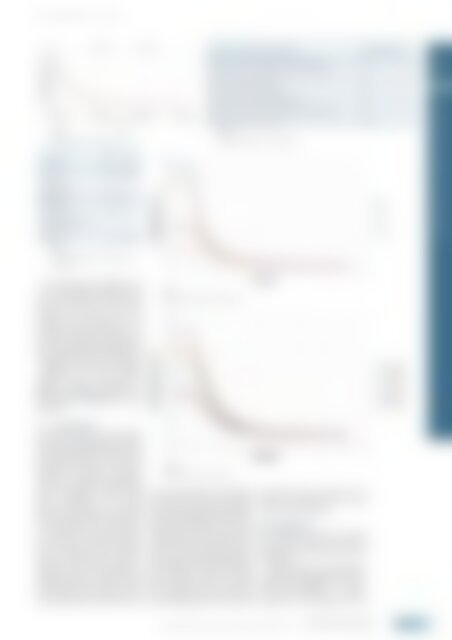atw 2018-04v6
You also want an ePaper? Increase the reach of your titles
YUMPU automatically turns print PDFs into web optimized ePapers that Google loves.
<strong>atw</strong> Vol. 63 (<strong>2018</strong>) | Issue 4 ı April<br />
Location of the Thermocouples<br />
Thermocouple<br />
| | Fig. 8.<br />
SCWL Maximum EP Temperature in LOFA.<br />
Parameter Value Unit<br />
Pressure 7 MPa<br />
Inlet Flow<br />
Temperature<br />
Max Flow<br />
Temperature<br />
Maximum AC<br />
Pressure Envelop (PE)<br />
Temperature<br />
210 ºC<br />
900 ºC<br />
450 ºC<br />
Mass flow 40 kg/h<br />
Inlet into the interpiping space of the reheater<br />
Output from the interpiping space of the reheater<br />
Entry into the test chamber<br />
Inlet to the reheater piping space<br />
Output from the reheater piping space<br />
Output from the primary side of the heat exchanger<br />
Maximum helium temperature<br />
| | Tab. 4.<br />
Thermocouples position and description.<br />
T1<br />
T2<br />
T3<br />
T4<br />
T5<br />
T6<br />
Tmax<br />
OPERATION AND NEW BUILD 225<br />
| | Tab. 3.<br />
HTHL main parameters calculated during<br />
steady state.<br />
The steady state simulation was<br />
run in null transient mode for 5,000 s<br />
and the stabilized conditions were<br />
reached after 3,500 s. The LOFA<br />
transients was characterized by an<br />
immediate safety shutdown of the<br />
reactor due to the loss of power. As a<br />
result of the SCRAM, the temperature<br />
went immediately down following the<br />
heat generated by decay gamma flux.<br />
Figure 9 shows the calculated<br />
temperature for various thermocouples<br />
positions (according to<br />
Table 4), while Figure 10 represents<br />
the maximum temperatures in the<br />
HTHL PE.<br />
| | Fig. 9.<br />
HTHL Helium temperatures during LOFA.<br />
5 Conclusions<br />
The article provides a brief introduction<br />
about the SUSEN project and the<br />
experimental facilities built in CVŘ in<br />
the Czech Republic for research and<br />
development in support of the safe,<br />
reliable and long‐term sustainable<br />
operation of existing energy facilities<br />
and in development of GIF IV and<br />
fusion technologies. The SUSEN<br />
R&D activities include four complementary<br />
programmes, mentioned in<br />
the introduction, which are focused<br />
on material science, thermal hydraulics,<br />
neutronics, radiation protection,<br />
nuclear chemistry, waste management<br />
and environmental studies. A<br />
significant part of the research programme<br />
is devoted to HTH and SCW<br />
experimental loops, which are going<br />
to be installed into the active core of<br />
the research reactor LVR-15. Both of<br />
| | Fig. 10.<br />
HTHL PE temperature during LOFA.<br />
these unique facilities are challenging<br />
to model and the selection of appropriate<br />
codes was a demanding process.<br />
A special methodology was used for<br />
assessing the abilities of the codes to<br />
simulate these advanced coolants and<br />
to obtain regulatory certificate/ permit<br />
for their use in operational and accident<br />
conditions and for preparation of<br />
the amendment of the LVR-15 FSAR.<br />
These presented activities represent<br />
only starting steps for the further<br />
codes validation which will be based<br />
on benchmarking of the codes with<br />
experimental data provided by the<br />
SCWL and HTHL loops in their<br />
experimental campaigns.<br />
Aknoledgment<br />
The authors would like to thank<br />
Mr. Miroslav Hrehor and Dr. Vincenzo<br />
Romanello for their kind revisions and<br />
suggestions.<br />
The presented work was financially<br />
supported by the Project CZ.02.1.01/<br />
0.0/0.0/15_008/0000293: Sustainable<br />
energy (SUSEN) – 2 nd phase,<br />
realized in the framework of the<br />
Operation and New Build<br />
Experimental and Analytical Tools for Safety Research of GEN IV Reactors ı G. Mazzini, M. Kyncl, Alis Musa and M. Ruscak

















